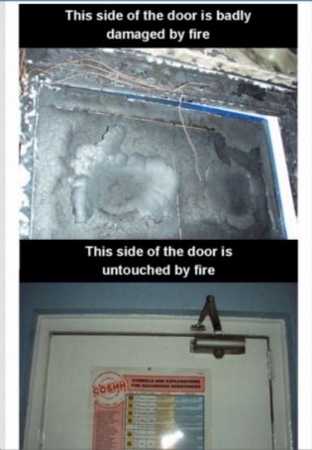Performance and inspection are buzzwords for estates and facilities managers when considering fire safety in hospitals and care homes.
A lot of passive fire protection is never seen, so it’s important someone knows where it is and checks it regularly
Speaking to BBH recently, Wilf Butcher, chief executive of the Association for Specialist Fire Protection (ASFP), said that installing the latest fire protection equipment, from alarms to inbuilt protection, was only half the battle, with inspection and maintenance also vitally important.
Hospitals and care homes are designed to contain fire within compartments for a prescribed length of time, allowing people to be moved horizontally out of harm’s way. This means, they will only need to evacuate between floors if the fire breaks out of a compartment before it can be extinguished.
“Hospitals and care homes will contain a whole range of fire protection systems, including alarm systems to ensure that people are aware of the fire, fire extinguishers and other suppression systems. But the inbuilt passive fire protection, such as fire resistant walls, doors and fire-stopping, plays a vital role,” said Butcher.
Fit for purpose
“Therefore, the first consideration is to make sure that the required passive fire protection systems installed are fit for purpose. This is the first line of defence to protect buildings and their occupants in the event of a fire.”
This is where inspection is important, as passive fire protection is no good if it is faulty or damaged.
“A lot of passive fire protection is never seen, so it’s important someone knows where it is and checks it regularly,” said Butcher.
A big no-no is the trend, particularly in care homes, to wedge open doors to make the transfer of people and equipment easier.
If a fire breaks out no-one is going to run round the building removing the chucks and closing all the fire doors. That is why it is vital that doors are not wedged open
Butcher warns: “If a fire breaks out no-one is going to run round the building removing the chucks and closing all the fire doors. That is why it is vital that doors are not wedged open. If they must be held open, use a device connected to the fire alarm system, so that the doors will close automatically if the fire alarm sounds.”
Doors must also be kept in good working order. This includes checking they are fit for purpose and have not been compromised by damage or incompatible fixtures and fittings, including ironmongery. In particular, the seals that prevent fire and smoke from spreading through the join between two doors should be regularly checked.
Danger zones
“Smoke seals should be checked to ensure they are not damaged and match up so they stop any smoke from moving between compartments,” said Butcher.
Another danger zone is above fire doors, where suspended ceilings often hide gaps through which smoke and flames can spread.
“If any of these things are not maintained, then your fire defences may be useless,” said Butcher.
His advice is to ensure that equipment has been installed and maintained by an expert that has been independently assessed by a third-party certification board such as ASFP members BM TRADA, BRE/LPCB, FM Approvals, IFC Certification, Underwriters Laboratories or Warrington Certification. “All ASFP installer members are third party certificated, so simply look for the ASFP logo when specifying,” says Butcher.
It is about choosing appropriate products, installing them properly, and maintaining them so that effective fire protection, detection and firefighting measures are in place should a blaze break out
“It is about choosing appropriate products, installing them properly, and maintaining them so that effective fire protection, detection and firefighting measures are in place should a blaze break out.”
For more information, you can access the British Wood Federation’s guidance, The role of fire doors, frames and fire seals, door hardware maintenance and replacement, on the ASFP website.





